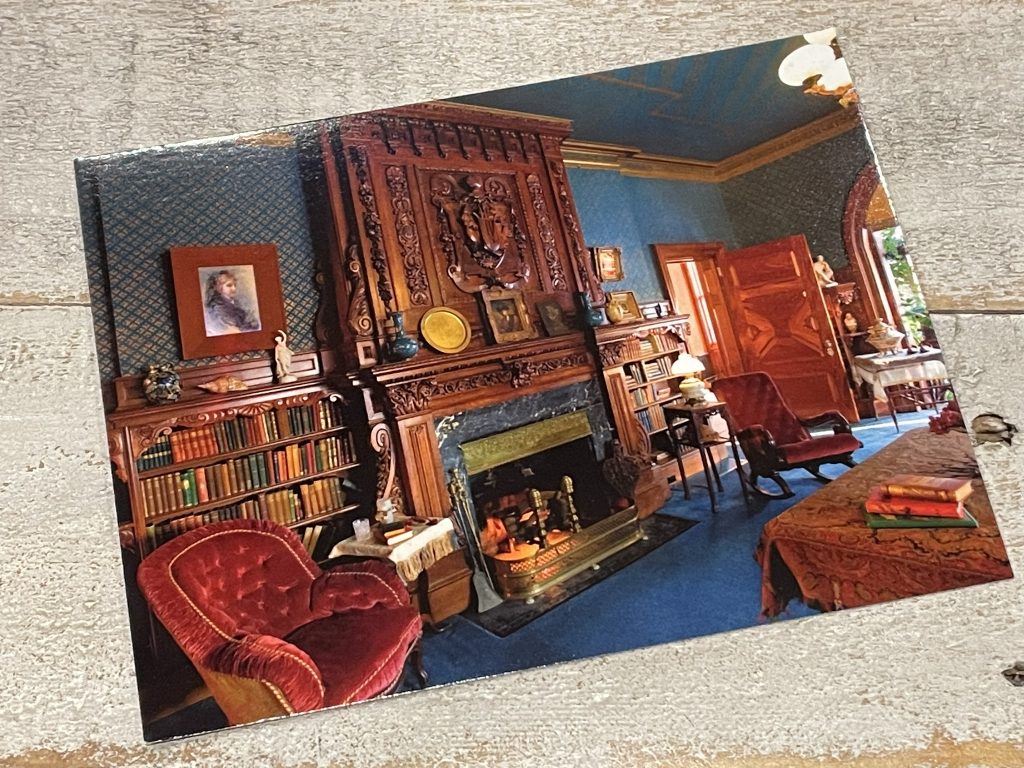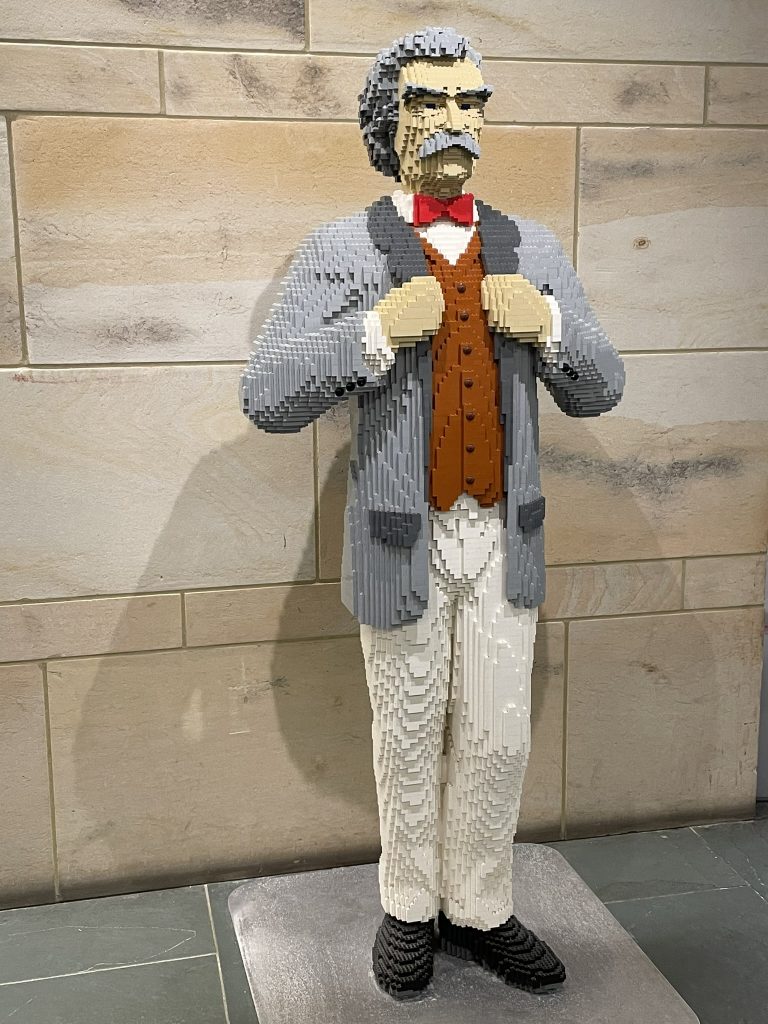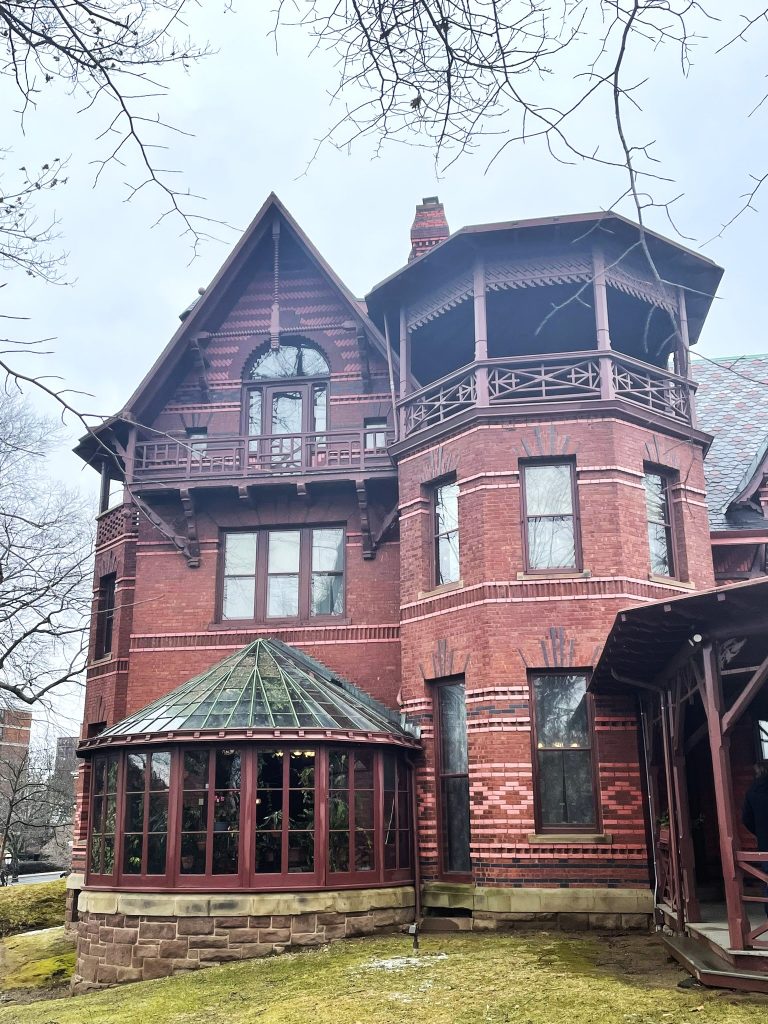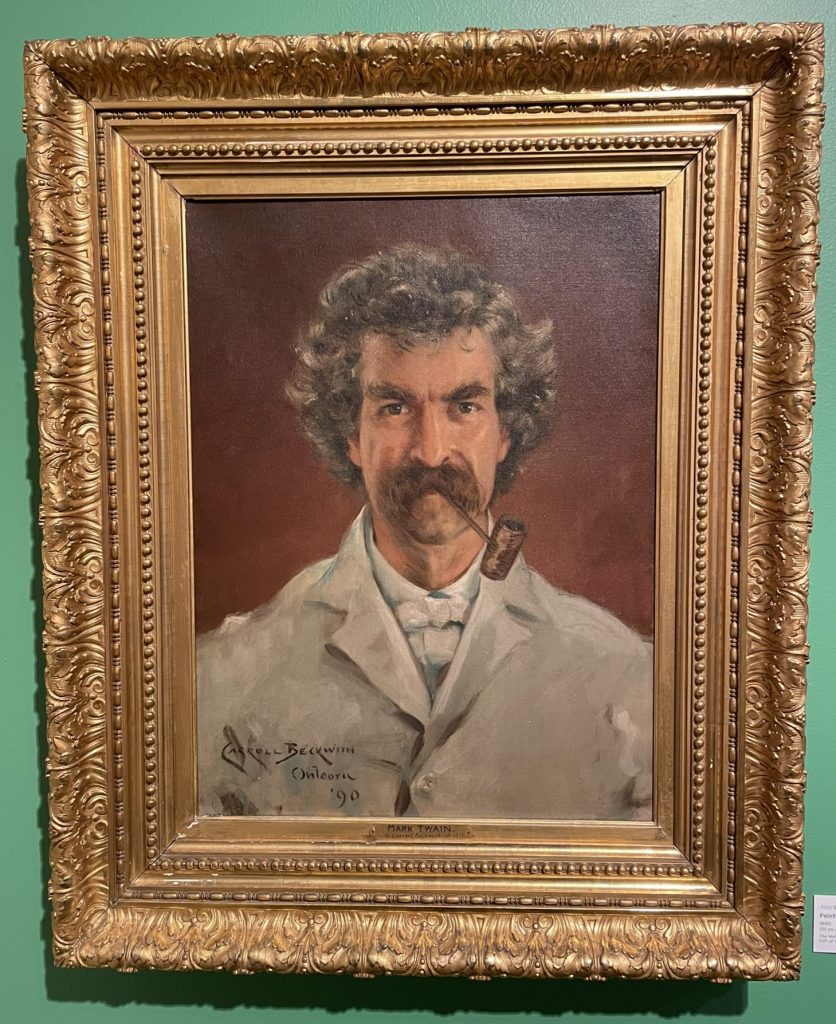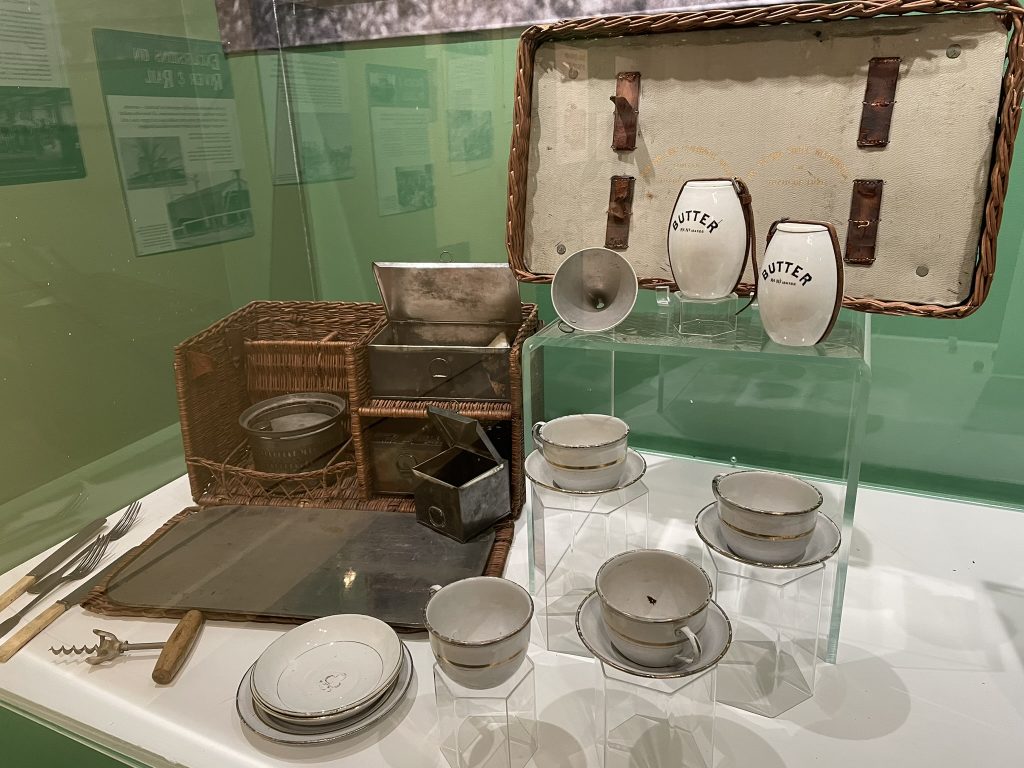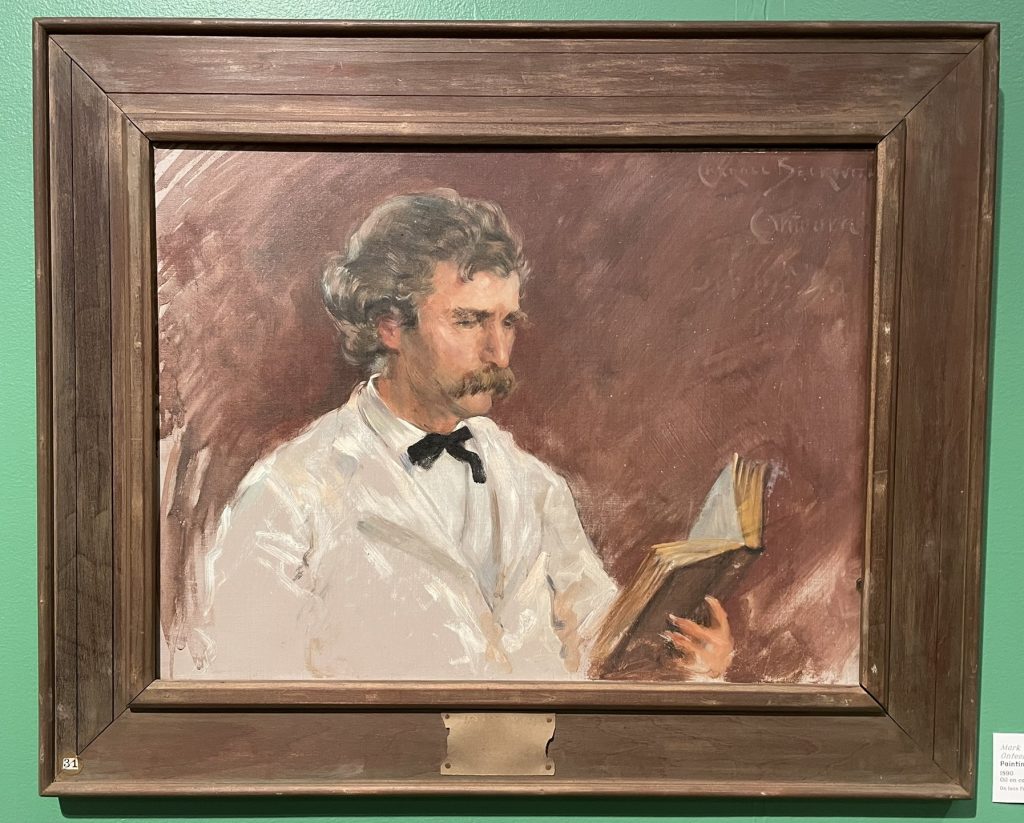I’ve previously visited the Mark Twain House on a few occasions, but having recently read a Mark Twain biography (Mark Twain: A Life by Ron Powers, affiliate link), I wanted to visit again.
The house, located in Hartford, Connecticut, is absolutely stunning, and worthy of repeat visits.
Mark Twain was of course the pen name of Samuel Langhorne Clemens.
By the time he moved to Hartford in 1871, he was well-known, though it was his wife’s fortune that sustained their lifestyle. Hartford was a publishing hot spot at the time, and Clemens wanted to be closer to his publisher.
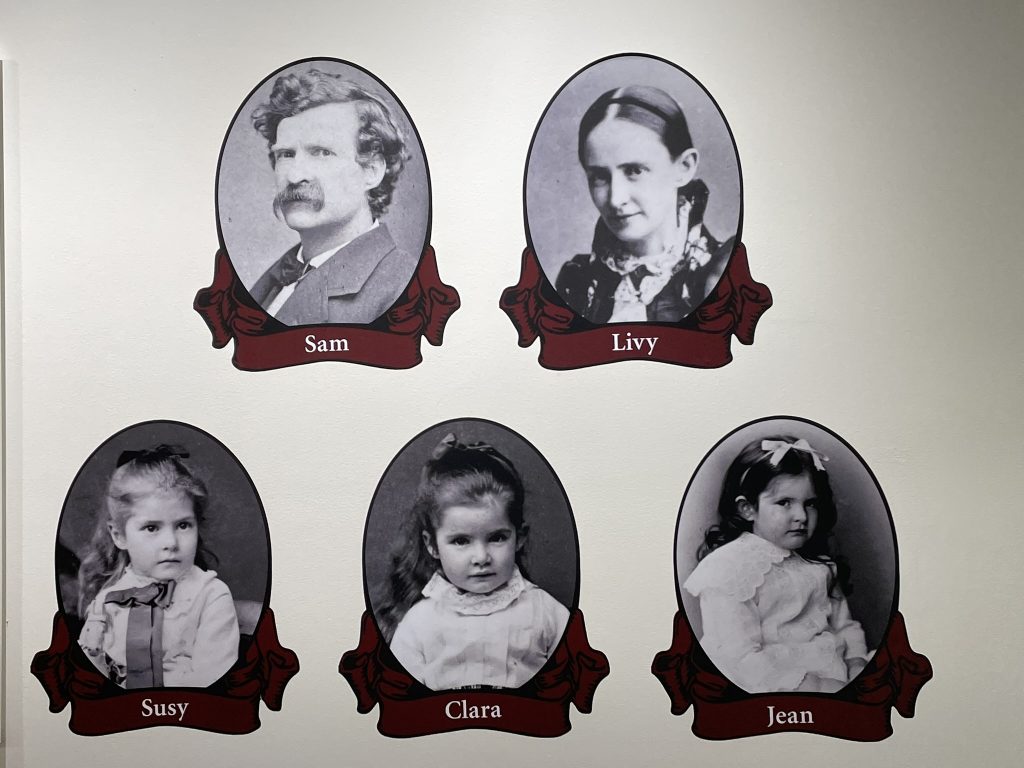
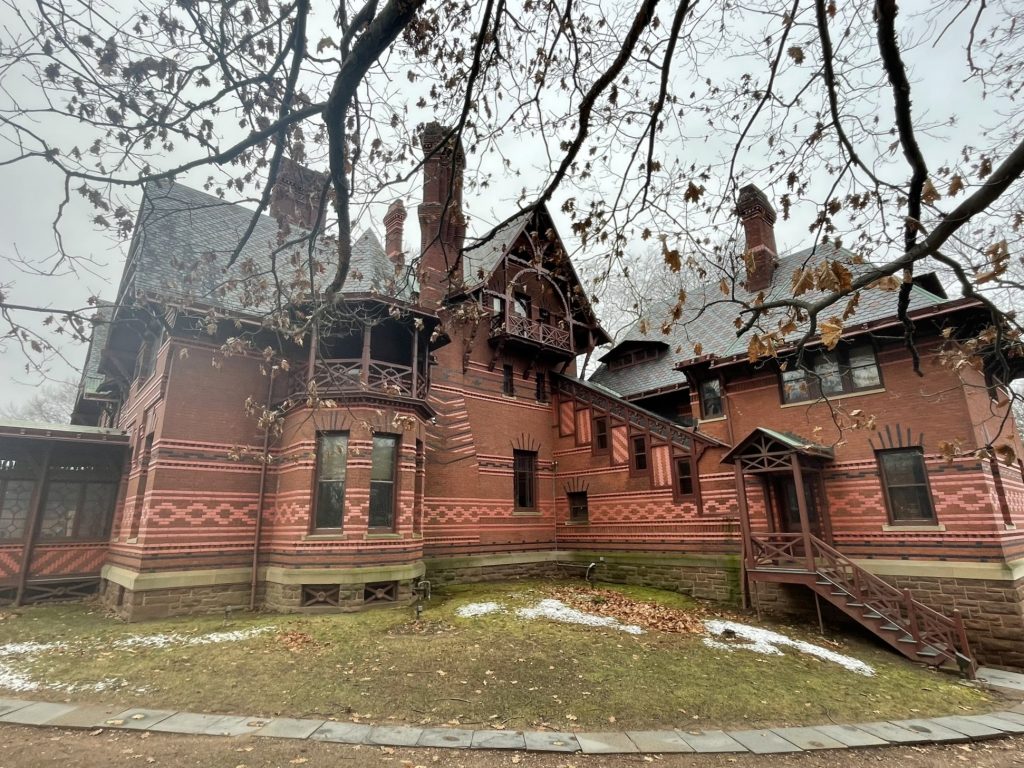
The Clemens family first resided at Nook Farm, but they soon purchased land and began building their home.
The 11,500-square-foot house is in the American High Gothic style; it was completed in 1874, and the family moved in. The Hartford Daily Times said of the building,
The novelty displayed in the architecture of the building, the oddity of its internal arrangement and the fame of its owner will all conspire to make it a house of note for a long time to come.
The exterior of the home is stunning, with intricate brick patterns and over-the-top woodwork. The interior is likewise decorated, with hand-stenciled walls and imported mantle-pieces; an updating overseen by Louis Comfort Tiffany in 1881.
Unfortunately, no tour photographs are allowed, though I’ve included some pictures of postcards I purchased. You can do a virtual tour of the house here.
While living in the home, Twain wrote some of his best works: The Adventures of Tom Sawyer (1876), The Prince and the Pauper (1881), Life on the Mississippi (1883), Adventures of Huckleberry Finn (1884), and A Connecticut Yankee in King Arthur’s Court (1889).
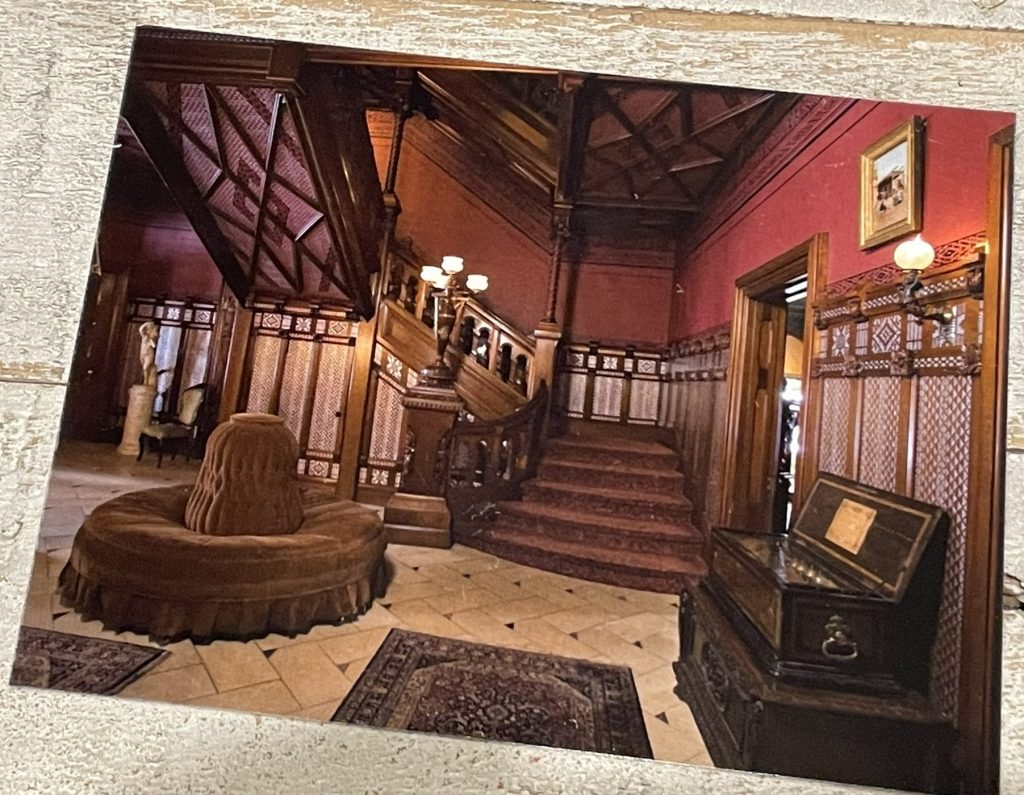
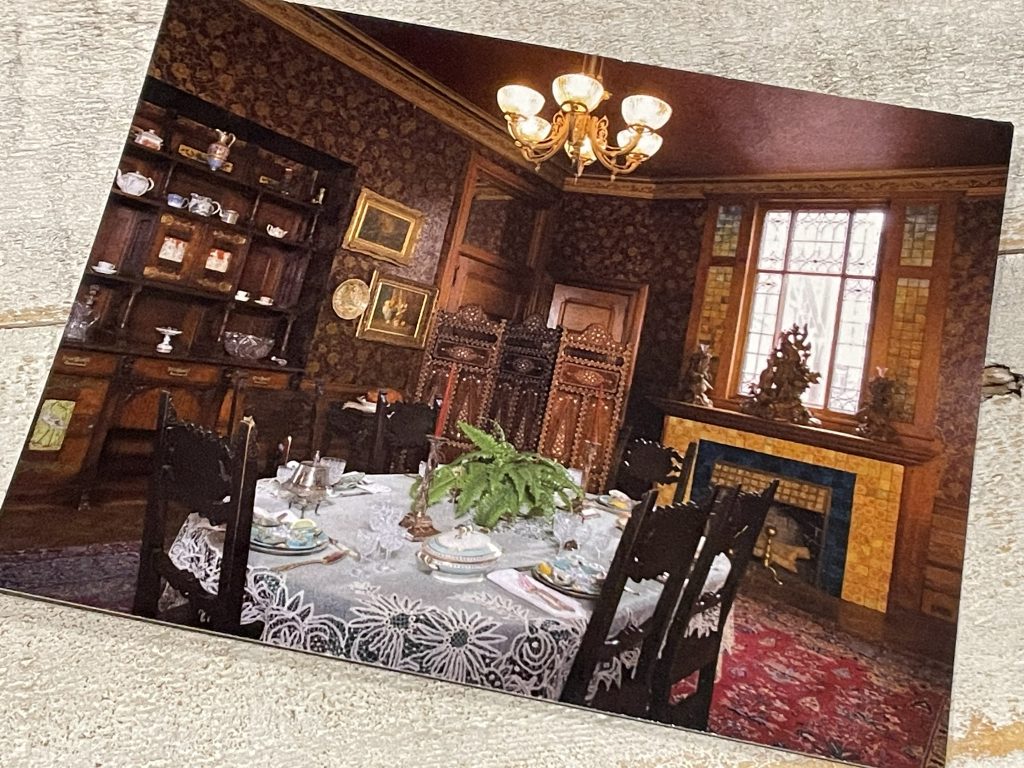
Clemens made some bad business investments, and in 1891 the family had to leave the house behind and move to Europe, where they could live less expensively and Clemens could earn money lecturing. Unfortunately, while abroad their daughter Susy died (1896), and the family could not bring themselves to reside in the house again. They sold the house in 1903.
After this the building served as a private residence, school, apartment building, and public library branch, and by 1929 it was at risk of demolition. Fortunately, a non-profit was formed to save it, but it took many years to pay off the mortgage, restore it from its poor condition, and purchase furnishings. It did not open as a museum until 1974.
The visitors’ center includes a film, permanent and temporary exhibits (both of which I found underwhelming, to be honest), education space, a café, and of course a gift shop.
Across the lawn one can visit the Harriet Beecher Stowe House; Stowe was a contemporary of Clemens’ and the families often socialized.
In 2012, the home was named one of the Ten Best Historic Homes in the world in a National Geographics Book publication.
